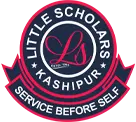In the pursuit of academic excellence, the mantra 'study smarter, not harder' resonates more than ever. With the abundance of information and resources at our fingertips, the challenge isn't just about how much you study but how effectively you do it. Here, we explore a variety of techniques that can enhance your learning process, retain information better, and make the most of your study time.
Understanding Your Learning Style
Before diving into various study methods, it's crucial to understand that everyone has a unique learning style. Some students may find visual aids like charts and graphs helpful, while others might prefer reading out loud or teaching the material to someone else. The key is to identify what works best for you and tailor your study methods accordingly.
1. The Pomodoro Technique
Developed in the late 1980s by Francesco Cirillo, the Pomodoro Technique uses a timer to break down work into intervals, traditionally 25 minutes in length, separated by short breaks. Here's how you can implement it:
· Choose a task to be accomplished.
· Set the Pomodoro (timer) to 25 minutes.
· Work on the task until the timer rings, then put a check on your sheet of paper.
· Take a short break (5 minutes is OK).
· Every 4 Pomodoros take a longer break.
This method not only helps maintain focus and keeps you fresh but also helps estimate how much time a task requires.
Life Lessons From Bhagwat Gita: Read more
2. Active Recall
Active recall involves testing yourself on the material you are trying to learn instead of passively reading or rereading the text. This could mean practicing with flashcards, doing practice problems without looking at the solution, or teaching the material to someone else. When you retrieve information from memory, it strengthens your understanding and recall.
3. Spaced Repetition
Spaced repetition leverages the psychological spacing effect, where learning is spread out over time. Instead of cramming, review information several times after learning it, with increasing intervals between reviews. This technique is often used in conjunction with flashcard systems like Anki or Quizlet, where the cards you find most difficult are shown more often.
4. Feynman Technique
Named after the Nobel Prize-winning physicist Richard Feynman, this technique involves teaching a concept you want to understand in simple terms so that a child can understand it. This forces you to clarify your understanding and identify any gaps in your knowledge. The four steps are:
· Choose a concept you want to learn about.
· Pretend you are teaching it to a student in grade six.
· Identify gaps in your explanation; go back to the source material to better understand it.
· Review and simplify.
5. Mind Mapping
A mind map is a diagram used to visually organize information. It's particularly useful for visual learners. To create a mind map, you start with a central concept, and then branch out into subtopics, key ideas, and further details. It can help with brainstorming, summarizing information, and making connections between ideas.
Creating the Right Environment
Your study environment can significantly impact your productivity. Ensure you have a quiet, comfortable, and distraction-free space. Some people find background music helpful, while others need complete silence. Experiment to see what environment makes you most productive.
Taking Care of Yourself
No matter how effective your study techniques are, they won't be as effective if you're not taking care of your physical and mental health. Ensure you're getting enough sleep, eating well, and taking time to relax and exercise. Stress and fatigue can significantly impair your ability to absorb and retain information.
Adapting and Evolving
Remember, there's no one-size-fits-all approach to studying. What works for one person might not work for another, and what works for you in one subject might not work for another. Be willing to try different methods and adapt based on what is most effective. Pay attention to how you learn best and be open to evolving your strategies over time.
Good Habits for Students: 10 Essential Practices for Academic Success: Read more
Conclusion
Studying smarter, not harder, is about making the most efficient use of your time and efforts. By understanding and implementing effective study techniques like the Pomodoro Technique, active recall, spaced repetition, the Feynman Technique, and mind mapping, you can enhance your learning process and achieve better results. Remember to take care of your physical and mental health, as they play a crucial role in your academic success. With the right strategies and a proactive approach, you can optimize your study habits and pave the way for a lifetime of learning.




